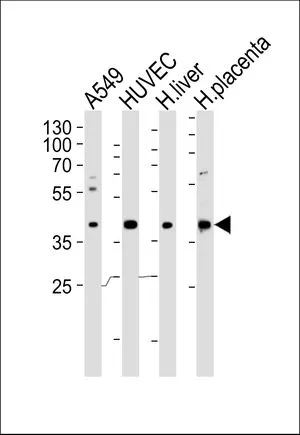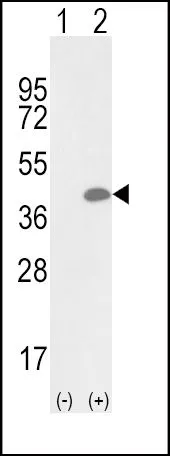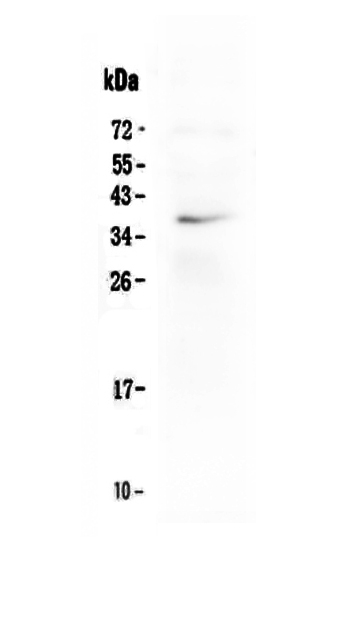
WB analysis of HUVEC cell lysate using GTX80987 OLR1 / LOX-1 antibody, Internal. Loading : 35ug Dilution : 1:1000
OLR1 / LOX-1 antibody, Internal
GTX80987
ApplicationsWestern Blot, ImmunoHistoChemistry, ImmunoHistoChemistry Paraffin
Product group Antibodies
TargetOLR1
Overview
- SupplierGeneTex
- Product NameOLR1 / LOX-1 antibody, Internal
- Delivery Days Customer9
- Application Supplier NoteWB: 1:1000. IHC-P: 1:10-1:50. *Optimal dilutions/concentrations should be determined by the researcher.Not tested in other applications.
- ApplicationsWestern Blot, ImmunoHistoChemistry, ImmunoHistoChemistry Paraffin
- CertificationResearch Use Only
- ClonalityPolyclonal
- ConjugateUnconjugated
- Gene ID4973
- Target nameOLR1
- Target descriptionoxidized low density lipoprotein receptor 1
- Target synonymsCLEC8A, LOX1, LOXIN, SCARE1, SLOX1, oxidized low-density lipoprotein receptor 1, C-type lectin domain family 8 member A, hLOX-1, lectin-type oxidized LDL receptor 1, ox LDL receptor 1, oxidized low density lipoprotein (lectin-like) receptor 1, oxidized low-density lipoprotein receptor 1, soluble form, scavenger receptor class E, member 1
- HostRabbit
- IsotypeIgG
- Protein IDP78380
- Protein NameOxidized low-density lipoprotein receptor 1
- Scientific DescriptionThis gene encodes a low density lipoprotein receptor that belongs to the C-type lectin superfamily. This gene is regulated through the cyclic AMP signaling pathway. The encoded protein binds, internalizes and degrades oxidized low-density lipoprotein. This protein may be involved in the regulation of Fas-induced apoptosis. This protein may play a role as a scavenger receptor. Mutations of this gene have been associated with atherosclerosis, risk of myocardial infarction, and may modify the risk of Alzheimers disease. Alternate splicing results in multiple transcript variants.[provided by RefSeq, Feb 2010]
- Storage Instruction-20°C or -80°C,2°C to 8°C
- UNSPSC12352203










